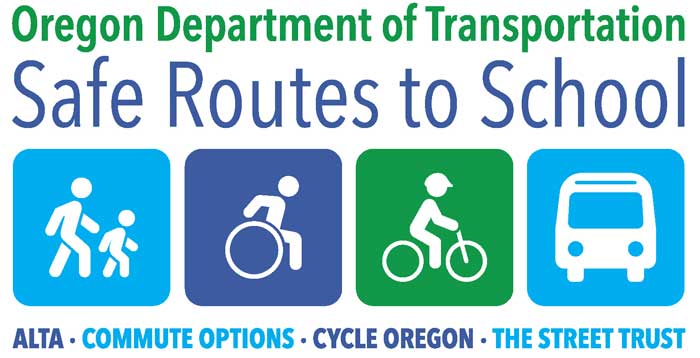Unique challenges and best practices in rural Oregon
(Note: This blog post is adapted from the Safe Routes to School National Partnership’s “Rural Communities – Making Safe Routes Work.”)
Safe Routes to School in Rural Communities Oregon can help by improving walking and biking features. In the U.S., rural communities often have higher obesity rates, high injury and fatality rates from collisions, and less than ideal infrastructure for safe and convenient walking and biking.
A few key facts from rural communities:
- Children who live in rural areas are 25% more likely to be overweight than children who live in urban areas.
- Rural children (and adults) have lower levels of physical activity.
- Small towns and rural areas often have fewer safe walking conditions, like sidewalks, street lighting and crosswalks.
- Rural areas often have higher rates of injuries and fatalities from traffic collisions.
- Rural communities often have high-speed roads and highways that are more dangerous for people walking and biking.
- In some rural communities, higher rates of poverty mean that some people do not have access to cars, so they have a high need for safe biking and walking options.
Other challenges may include long travel distances, schools that are adjacent to busy highways, aggressive dogs, financial constraints, and more.
Fortunately, Safe Routes to School initiatives can address many of these challenges in a variety of ways! As with other Safe Routes to school programs, rural advocates may want to cultivate success and build momentum by starting with schools where conditions are easiest. SRTS Coordinators can encourage students who live within a mile of school to walk or bike by hosting events such as walking school buses.
In the case where most of the students live well more than a mile from school, there are other opportunities to create programs to help students get walking and biking.
Remote drop-offs
Remote drop off programs, also known as “walk on in” programs can help increase walking and physical activity opportunities for students who live a long way from school. In a remote drop off program, children are driven most of the way to school, but are then dropped off a short distance from school so they can walk the remainder of the way. A remote drop off site can be a church, park or parking lot, anywhere where students can safely congregate. A volunteer can then lead a walking school bus to get the students walking to school.
Walk to school bus stops
Many rural students ride school buses to get to and from school. By incorporating a program focused on walking to school bus stops, kids can include walking or biking as part of their daily life. These programs can be popular with school transportation departments, since they may require fewer bus stops with more children boarding at each stop. It’s important to work closely with parents for these types of programs to ensure you have smooth implementation.
Frequent walker programs
Where few children live near school and other approaches to increasing walking and bicycling may have had limited success, frequent walker programs can instill an appreciation for walking and its health benefits in children while increasing physical activity. These programs get kids walking at school, so they do not directly address the trip to school. But their benefits can inspire students to ask to walk or bicycle to school, and they can give students many of the benefits of physical activity. One middle school that implemented this approach saw a reduction of 60-70 percent in disruptions by students within weeks of starting the program, and sustained the improvements over the entire year.
Adapt walking school buses for a rural environment
Finding and retaining good volunteers is key to a sustainable walking school bus program. Many rural communities have had success with walking school bus programs when they partner with local senior centers or older adult communities, as this volunteer pool can be very reliable. Another option is to partner with local businesses or government agencies that have wellness programs. Often these workplaces have incentives for people who engage in physical activity throughout their day.
Make stoplights and crosswalks a priority for state highways
When rural communities can show sufficient need, they may be able to convince state transportation departments to install stoplights, stop signs, crosswalks or crossing guards to reduce the dangers when students are crossing the street.
Ensure smart school siting
When schools are sited in places that can be easily walked or biked to, everyone wins! Rural communities are seeing that smart school siting provides benefits for school districts – not just because students who are healthy and physically active do better in school, but also because financially challenged school districts and states can save money by reducing busing costs and infrastructure costs.
Additional Resources:
